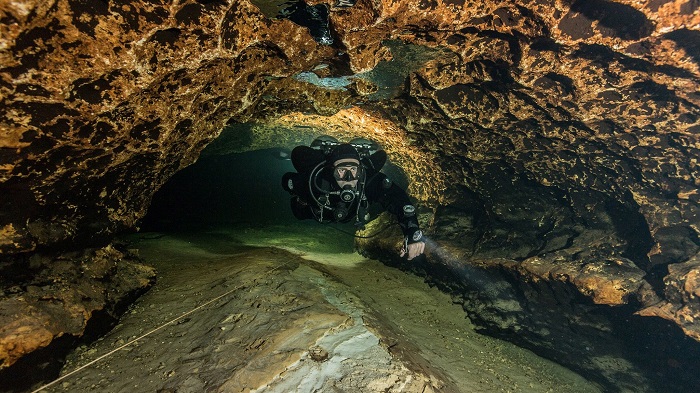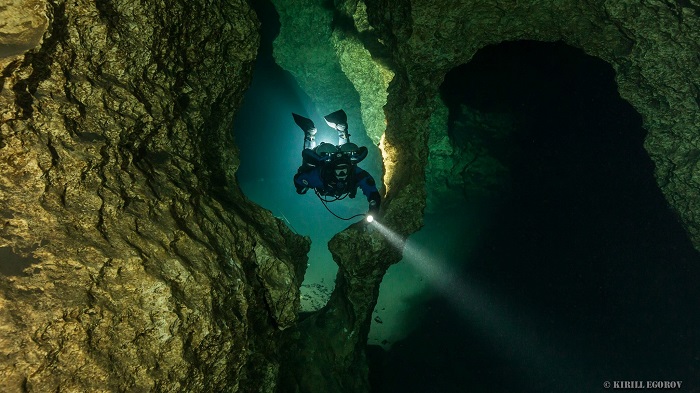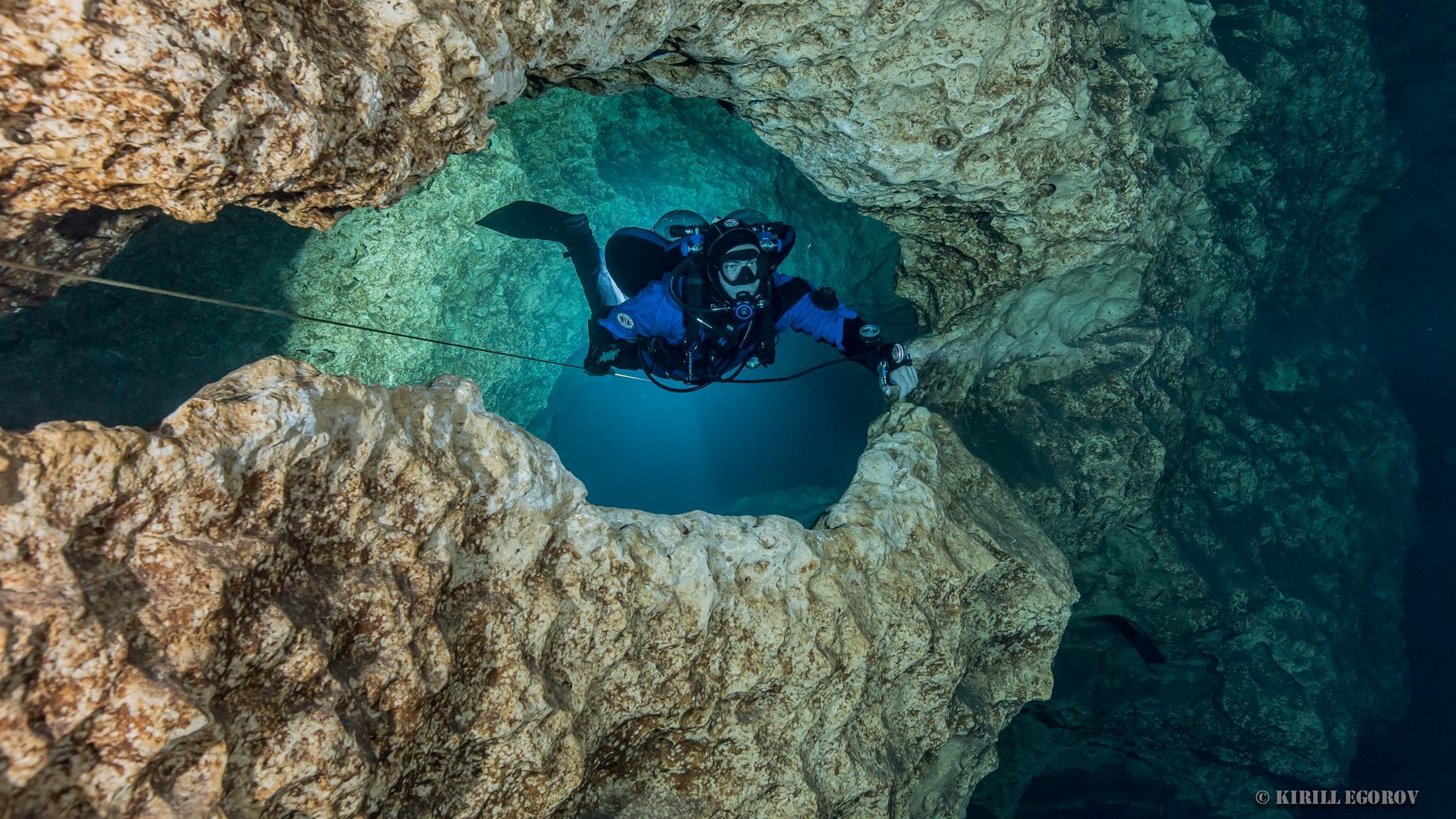This was originally written by myself and Diana Giorgetti for the Ultimate Scuba Guide. While it is specific to scuba diving in general and cave diving in particular, the ideas are relevant to many aspects of living the Gentleman Spy lifestyle, so I’m posting it here for you.
The rescue at Tham Luang cave presented unique complications for rescuers, volunteers, and the people trapped inside. This was unlike other cave diving rescues and the results are nothing short of a miracle. The professionalism, dedication, and teamwork required for the rescue is the result of decades of experience from the cave divers, cavers, SEALs, para-rescuemen, and more.
The rescue rallied people around the globe around the efforts of the best in the world in otherwise obscure disciplines. It also ignited interest in cave diving in general and cave rescues in particular. Many divers have asked how they can build the skills to be more like Rick Stanton, John Volanthen, Richard Harris, and the rest of the team that brought the boys to safety.
That’s easier said than done. Mastering the skill set is much more than a handful of classes and a bit of extra equipment. These men have decades of experience as divers, cave divers, and explorers. But each step along the way will make you a better diver, a better rescuer, and more useful overall.
This article will go over what cave diving is; how, why, and where to obtain training, and follow-on ideas about why this rescue in particular was so spectacular and why it was successful in the first place.
Enjoy…
CAVE DIVING
Think of caves as openings to another world; unknown places shrouded in darkness. Underwater caves are even more so: completely alien environments as inhospitable to human life as the surface of the moon.

Cave diving is exactly what it sounds like: any type of scuba diving done in a water filled cave beyond the daylight zone.
In a cave, you must solve the problem and be able to exit the cave. You can never just swim to the surface. Clear water can turn to zero visibility with one bad fin kick. Getting lost means you have the rest of your life to find the exit. This makes cave diving a deceptively easy way to die if you do not have proper training.
Even a basic cave dive is likely 2-4 times longer than any normal “recreational” dive. Dives in the 2-3 hour range are the norm for cave divers, and 4-8 hour dives aren’t uncommon. Exploration dives in the 12-20+ hour range aren’t unheard of. Double tanks or rebreathers, dry suits, and tools like diver propulsion vehicles are the norm.
This all makes cave diving fundamentally different than the open water diving most people know.
NO SUCH THING AS “ZERO TO HERO”
The commitment to becoming a cave diver is a substantial investment. Cave diving requires specialized training, techniques, and equipment configuration. And practice. Dozens of hours inside the cave practicing the myriad scenarios that could go wrong in an overhead environment, and hundreds of hours of diving between courses to get and maintain the necessary experience.
There is no good way for a new diver to jump from zero to hero in a short period of time. It requires time, money, and dedication. Anyone who tells you otherwise does not have your safety and well-being at hand.
MASTERING THE BASICS
Before considering cave or technical diving, any scuba diver should first master the basics: buoyancy, trim, stability, and control. Proper breathing and mastering various different propulsion techniques like the flutter and modified flutter kicks, frog and modified frog kicks, helicopter turns, and backwards kicks should be second nature. Sharing air and buddy awareness are also of paramount importance before considering cave training.
Don’t waste your time or your cave instructor’s by coming to class with sub-par skills. Hone these in a course like GUE Fundamentals. This is a requirement for some agencies and a good idea no matter who you choose to train with. It will make your cave and technical training go much more smoothly and will help you in all of your diving whether you pursue technical training or not.

CAVE TRAINING
Next up, you’ll begin your cave training. Different agencies handle the specifics differently, but training is generally broken up into an introductory phase (GUE Cave 1, or Cavern + Intro to Cave for other agencies) and a full cave diver phase (GUE Cave 2, Full Cave + Stage Diving, Apprentice + Cave Diver, etc.).
The introductory phase will rehash the basics and add overhead-specific work and failure drills. You’ll learn how to use a reel and safety spool, find the line in silt-out/black-out conditions, use light signals and touch contact, share gas, deal with various equipment failures, and more. This will give you the tools to begin basic cave diving: going into the overhead environment and following the main line for a limited amount of time.
The cave diver phase will expand upon the basics again. You will refresh everything you’ve learned so far, as well as learn how to run a jump spool, make more complex navigational decisions, and get into more advanced gas management strategies like using stage cylinders to extend your range. You’ll expand your repertoire of emergency response procedures and team awareness and dynamics becomes important as you reorder divers to account for equipment failures, environmental changes, diver capacity, etc.
This is the basic “full cave diver” curriculum. At this point, you can (and should), hone your experience with diving. Lots of diving. Many people will never progress even this far, and most will not progress further, even after gathering hundreds or thousands of hours inside the caves.
ADVANCED TRAINING
For those that want to expand their boundaries, there are additional specialty courses:
- Take a cave DPV course to extend your range (Pro-tip: even if it’s not required by your agency, you should take a course like GUE’s DPV-1 before ever scootering in the overhead environment).
- Get mixed-gas training to explore into deeper sections of the caves.
- Transition from open circuit scuba to rebreathers which come with their own risks and rewards.
- Decide whether you want to use back-mount doubles or side-mount.
- Take cave rescue and/or body recovery classes.
And you can do all of this within the confines of “regular cave diving.” The vast majority of cave divers will do hundreds or thousands of dives at each level without ever straying from the explored limits of the cave(s) they’re diving in.
BUILDING EXPERIENCE
As you go through these dives, you will have your share of mishaps, scares, and upsets. As you push your personal limits and build experience, you will have close calls. You’ll silt out the cave or get stuck. You’ll have to help your buddy out of a tight spot, or have them help you. Even when (if) you do everything right, things will go wrong. You’ll find yourself thousands of feet back in the cave knowing that if something happens, it’ll still take you at least an hour (or two, or six) to get to the surface.
For most people, that is enough. You will be content diving just to have fun, see a beautiful new environment, and push yourself to be the best diver you can be.

PUSHING THE LIMITS
For the select few that need to push their limits further, you still need additional experience and training. Some training, like Cave Survey, is readily obtainable from reputable sources and active explorers. Other training is not.
At the extremes, cave exploration combines the skills of dry caving and technical rope work, with multiple advanced cave diving disciplines, often working in extremely limited visibility.
At this level, you’re no longer paying for courses and building base experience. You are finding and cultivating mentors and relationships. You’ll become part of a team, volunteering hundreds or thousands of hours with no guarantee of a positive outcome.
Getting to this level requires years of dedication, sometimes decades or more.
This diving is not easy and is often not “fun” in the traditional sense. Dives take place in difficult to reach environments. They are physically and technically demanding due to the equipment requirements. And they are often emotionally draining due to the level of sustained focus and risk involved. But for those who have chosen to dive at that level, it can be extremely rewarding.
MORE THAN JUST DIVING
Going back to the Thailand cave rescue, the rescue divers are all avid explorers who have pushed many limits and often had to make their own rules as they went along. They have decades of experience not only in all the modalities of cave diving, they’ve done so in extreme environments where they are performing not only as cave divers but dry cavers who use technical rope work and spelunking skills to get their gear far enough back into the cave to begin their dives. They’ve done these dives in clear, warm water and in the freezing cold with almost zero visibility. They’ve spent years honing not just their skills, but the friendship, camaraderie, and teamwork required to pull off dives that would have been impossible even a decade ago.
So for those asking how to how to go from where you are now to a place where you can dive like these guys, we hope this gives you an idea of how to proceed.
THERE IS NO SHORTCUT TO BEING THE BEST DIVER YOU CAN.
Courses like GUE Fundamentals can shave off years of frustration by getting you started off on the right foot, but you will still have to put in the work.
Coming from a recreational background, it’ll take months or years and thousands of dollars in training, equipment, and experience just to become a full cave diver. But the first time you poke your head up in Challenge Sink, see the Big Room in Ginnie Springs, or dip into Nohoch Nah Chich, you’ll know the training was worth it.
The experience you’ll gain in diver rescue techniques, failure management, and overall dive comfort will forever transform your diving and make you more valuable in any emergency.

For the cave diver looking to expand their horizons into exploration, it’ll again take years and tens of thousands (if not hundreds of thousands) of dollars in training, equipment, and travel to go where nobody has gone before. But when you see parts of the world that nobody except for your team ever has, connect one cave system to another, find a new species, or save 12 Thai soccer players and their coach, you’ll understand why the time and experience was necessary and worth it.
ADDENDUM FOR GENTLEMAN SPY:
The divers called to help with the Thai cave rescue aren’t just the best cave divers in the world, although they are among that group. They are also skilled cavers and explorers who have spent years honing the skills necessary to work in some of the most remote places on the planet. There are other cavers and cave divers who are as good or better in their individual disciplines. But these men have combined multiple disciplines into a cohesive skill set that allowed them to pull off the previously impossible.
This is one of the big reasons why Gentleman Spy is structured the way it is: the better you are in many different areas, the more likely you’ll be prepared to deal with any possible scenario.
*All photos of the author by Kirill Egorov. * If you are interested in learning to scuba dive, or want to take your existing dive skills to the next level, contact a GUE instructor and get started.
